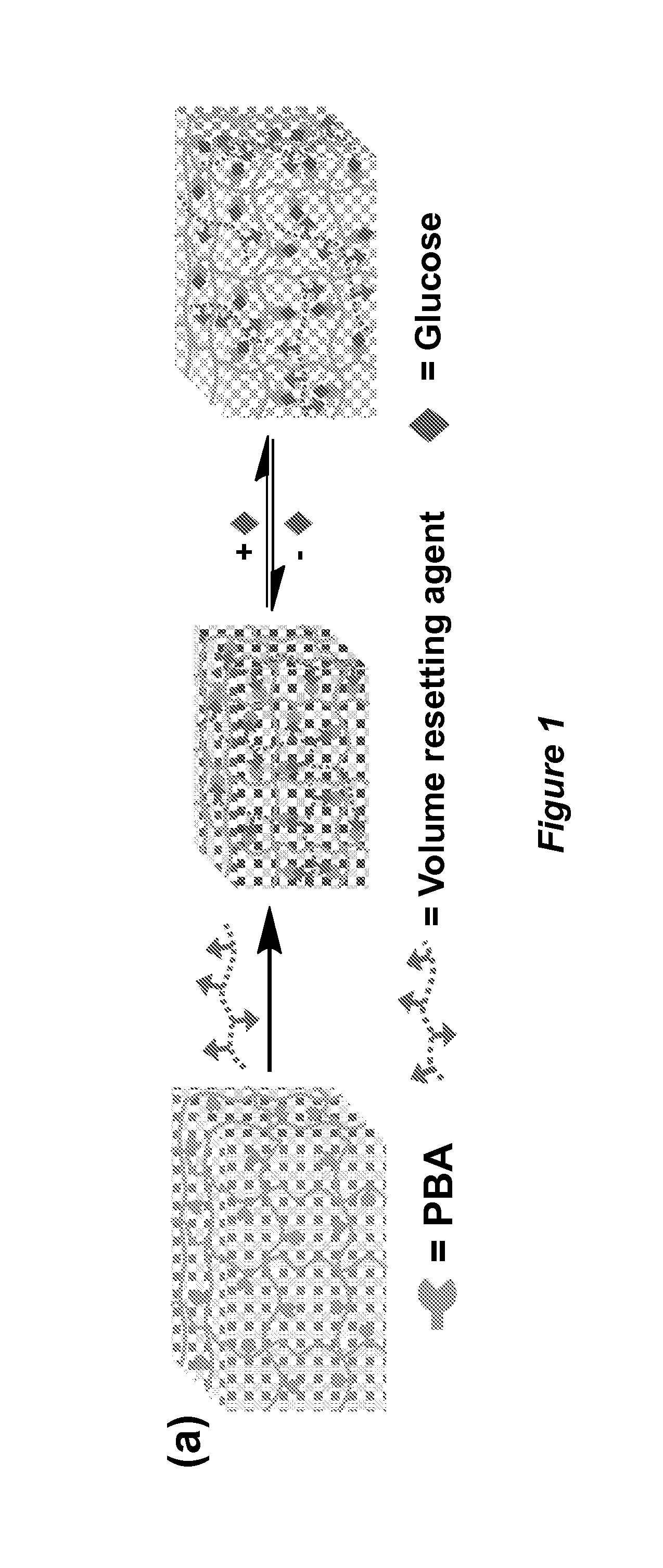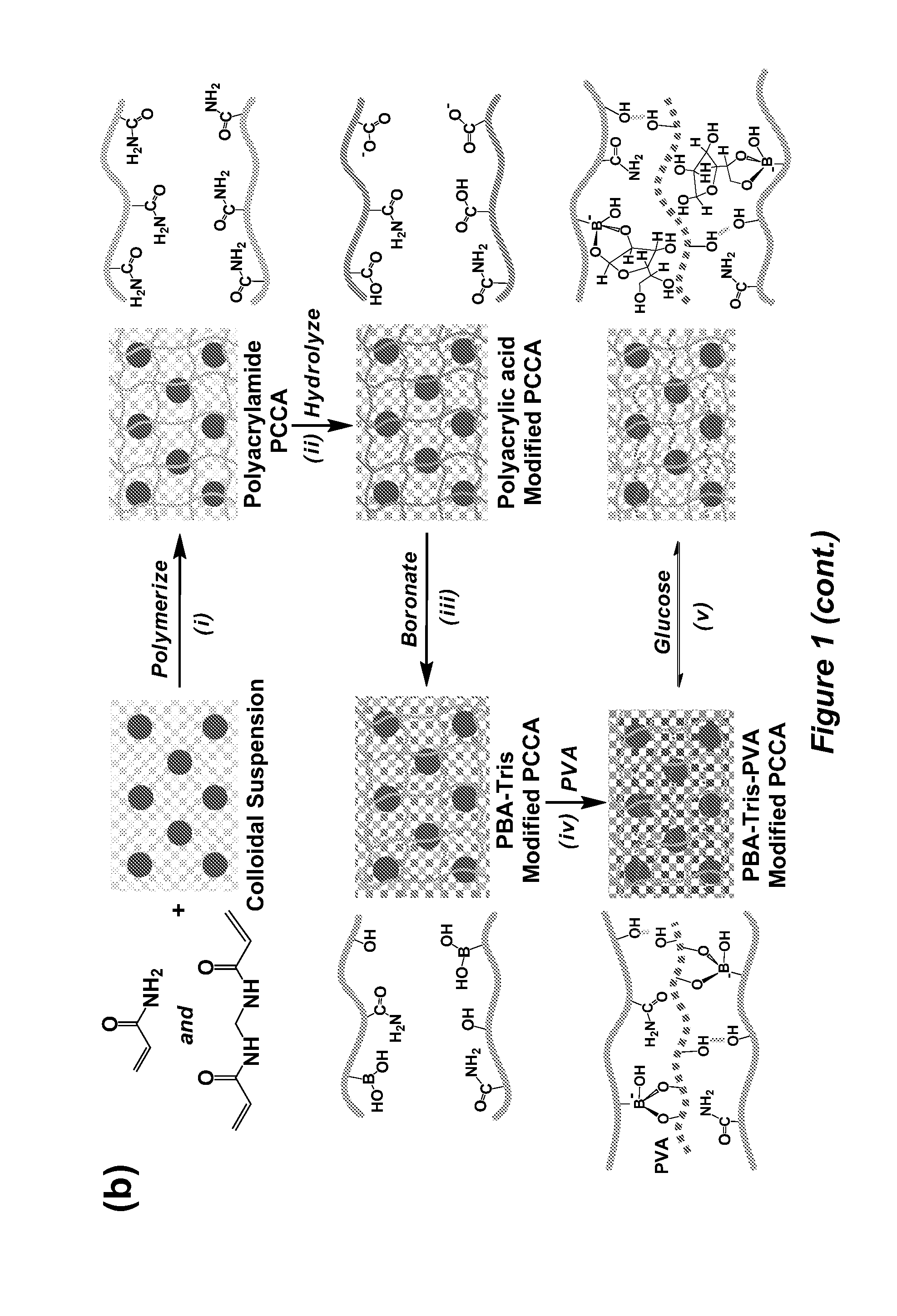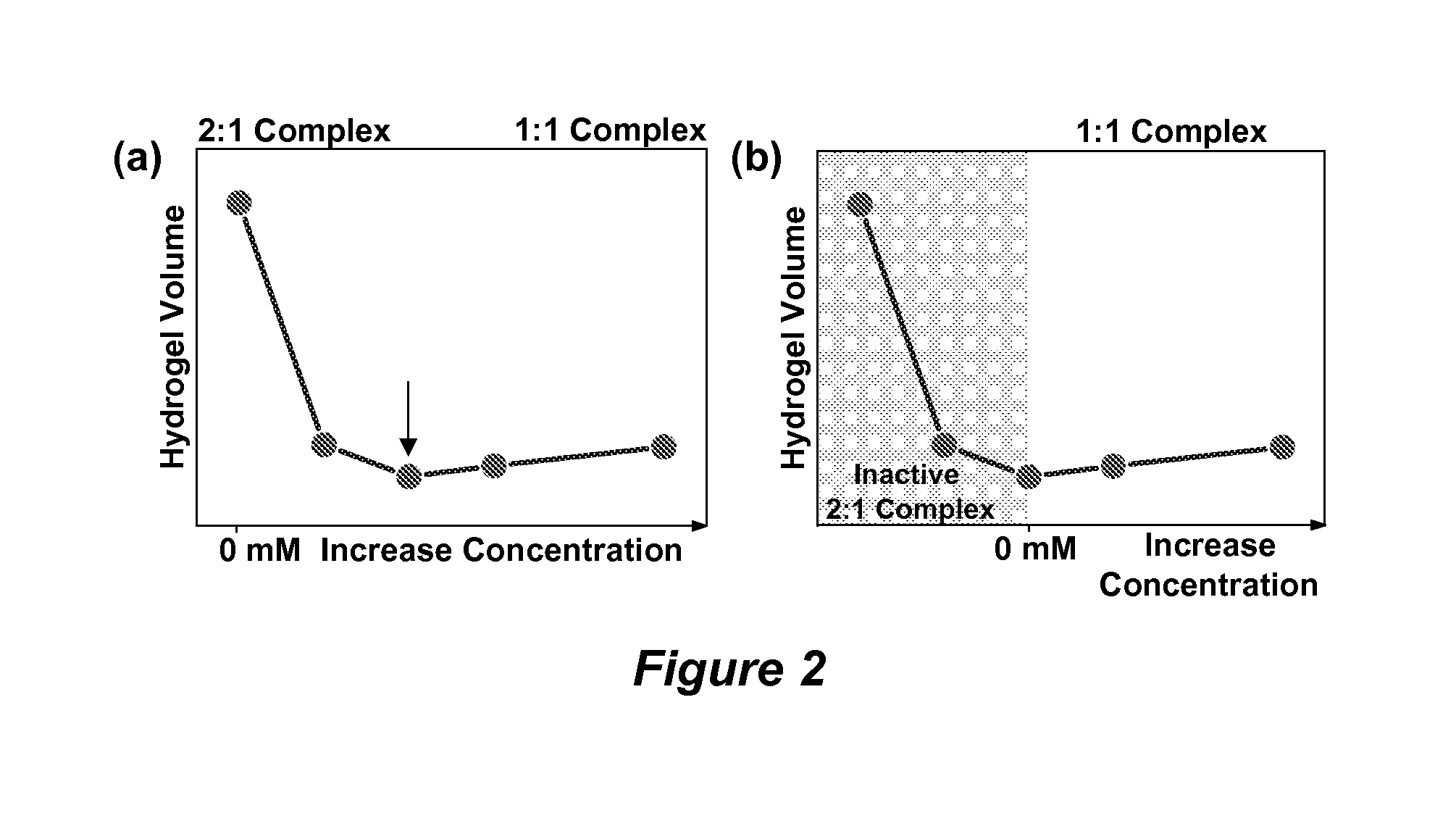Volume response sensors having analyte controlled reversible crosslinking
a volume response and crosslinking technology, applied in the field of volume response sensors having analyte controlled reversible crosslinking, can solve the problems of lowering blood glucose concentration in people, none of which has been successfully developed, etc., and achieves the effects of reducing sensor volume, improving resolution, and improving sensor sensitivity
- Summary
- Abstract
- Description
- Claims
- Application Information
AI Technical Summary
Benefits of technology
Problems solved by technology
Method used
Image
Examples
example 1
Hydrogel Sensor Materials Synthesis and Glucose Sensing Measurements
[0196]A. Synthesis of Hydrogel Sensor Materials.
[0197]Highly charged monodispersed polystyrene colloids were prepared via emulsion polymerization and purified by dialysis against Millipore water (Zhang et al., Chem. Mater. 2013, 25, 3239). The monomers (an acrylamide and N,N′-methylenebisacrylamide mixture), aqueous polystyrene colloidal suspension, photoinitiator solution and ion exchange resin were mixed. The solution for polymerization was taken using a syringe connected with a needle that blocks the ion exchange resin. The solution was placed in a cell composed of an acrylate functionalized bottom glass slide, a 30 micrometer thick spacer, and a fluorinated top glass slide and polymerized under a mercury UV lamp. The resulting polyacrylamide hydrogel PCCA was attached to the acrylate functionalized bottom slide.
[0198]Hydrolysis was performed in an aqueous solution containing sodium hydroxide, sodium chloride, an...
example 2
Synthesis of a Crystalline Colloidal Array (CCA)
[0234]Sodium bicarbonate (0.24 g) was dissolved in Millipore water (200 g) in a three-neck flask. The solution was purged by nitrogen under stirring for 40 minutes. Dihexyl sulfosuccinate sodium salt solution (2.28 g) and Millipore water (28.56 g) were added to the flask and the temperature was increased to 50° C. A monomer mixture of de-inhibited styrene (47.28 g) and divinylbenzene (4.44 g) was added to the reaction system at a rate of 4 mL / min. 3-Allyloxy-2-hydroxy-1-propanesulfonic acid sodium salt solution (15.72 g) was diluted with 12 mL Millipore water and added into the flask 1.5 hours after the monomer mixture was added. The temperature was increased to 70° C. Ammonium persulfate (0.64 g) was dissolved in Millipore water (20 mL) and added into the flask. The reaction system was refluxed for 6 hours and cooled to room temperature. The resulting polystyrene colloid suspension was purified by dialysis for 30 days until the electr...
example 3
Synthesis of Hydrogel Thin Films with Embedded Ordered Array of Like-Charged Polystyrene Spheres (Polyacrylamide Polymerized Crystalline Colloidal Array) (PCCA)
[0235]Acrylate functionalities were introduced to bottom glass slides by treating them with 20 mM 3-(trimethoxysilyl)propyl methacrylate in toluene overnight. Top slides were functionalized in 20 mM trichloro(1H,1H,2H,2H-perfluorooctyl)silane in chloroform overnight. Both slides were rinsed with ethanol and blown dry using nitrogen gas. The mold for polymerization consisted of a sandwich structure of a bottom slide, a spacer and a top slide. The spacer can be made of any suitable and effective material such as double-sided tape or a polymer film. An acrylamide / bis-acrylamide mixture (0.35 g) (37:1 wt. ratio), and 0.2 g mixed bed resin were added to 5 g of a polystyrene colloidal suspension. The mixture was shaken on Vortex mixer for 15 minutes. 2,2-Diethoxyacetophenone (DEAP) (0.1 g) solution (0.1 g DEAP in 1.0 g dimethyl sul...
PUM
| Property | Measurement | Unit |
|---|---|---|
| diameter | aaaaa | aaaaa |
| pH | aaaaa | aaaaa |
| thick | aaaaa | aaaaa |
Abstract
Description
Claims
Application Information
 Login to View More
Login to View More - R&D
- Intellectual Property
- Life Sciences
- Materials
- Tech Scout
- Unparalleled Data Quality
- Higher Quality Content
- 60% Fewer Hallucinations
Browse by: Latest US Patents, China's latest patents, Technical Efficacy Thesaurus, Application Domain, Technology Topic, Popular Technical Reports.
© 2025 PatSnap. All rights reserved.Legal|Privacy policy|Modern Slavery Act Transparency Statement|Sitemap|About US| Contact US: help@patsnap.com



